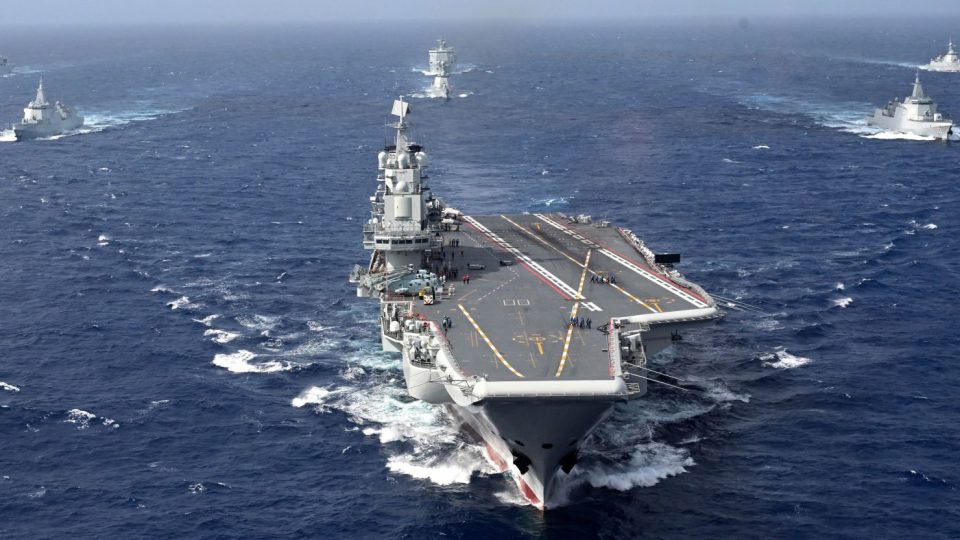China has constructed a land-based prototype nuclear reactor intended for a large surface warship, indicating significant progress toward developing the nation’s first nuclear-powered aircraft carrier, according to analysis of satellite imagery and Chinese government documents obtained by The Associated Press.
With the world’s largest navy, China’s rapid modernization includes the potential addition of nuclear-powered carriers to its fleet, which would enhance its capabilities for operating beyond its coastal waters and challenge the United States on a broader scale. “Nuclear-powered carriers would position China among the elite naval powers, alongside the United States and France,” stated Tong Zhao, a senior fellow at the Carnegie Endowment for International Peace. “Such a development would symbolize national prestige and elevate China’s standing as a global power.”
Researchers from the Middlebury Institute of International Studies in California discovered that a reactor at a site near Leshan, in the Sichuan province, is being developed for naval applications rather than for plutonium or tritium production for weapons. Dubbed the Longwei Project, this initiative is also referred to as the Nuclear Power Development Project in some official documents.
Despite requests for comment, neither China’s Defense Ministry nor Foreign Affairs Ministry responded. The findings marked a significant confirmation of longstanding speculation regarding China’s ambitions for a nuclear-powered aircraft carrier.
“The reactor prototype at Leshan is the first solid evidence that China is, in fact, developing a nuclear-powered aircraft carrier,” noted Jeffrey Lewis, a professor at Middlebury. He emphasized that operating a nuclear-powered aircraft carrier is an exclusive capability that China appears poised to achieve.
The analysis combined satellite images, public project documents, and reports, revealing that construction activity in Mucheng township aligns with developing a prototype reactor for naval use. This facility, identified as Base 909, is reported to house several operational, decommissioned, or under-construction reactors. Documentation indicates that the China Ship Research and Design Center has procured equipment for a reactor labeled for a “large surface warship” under the nuclear development initiative.
Satellite imagery from 2020 to 2023 demonstrated significant construction related to the project, including infrastructure adjustments that imply a pressurized water reactor is being developed—a type consistent with naval propulsion systems. Environmental impact reports classify the Longwei Project as a “national defense-related construction project” marked as “secret.”
Middlebury’s research presents a persuasive case suggesting that China is indeed pursuing nuclear propulsion for its naval surface ships, potentially including aircraft carriers. However, the study does not provide a timeline for when China might complete and operationalize such a nuclear-powered carrier.
China has operated conventional carriers since commissioning its first in 2012—a repurposed Soviet ship—followed by an indigenously built carrier based on Soviet design. The more recent Type 003 Fujian, launched in 2022, is the first carrier designed and constructed in China, featuring an advanced electromagnetic launch system similar to those utilized by the U.S. Navy.
Despite speculations about the construction of a fourth carrier, Chinese officials have not confirmed whether it will be nuclear-powered. The possibility of simultaneously producing a conventional Type 003 and a nuclear-powered Type 004 carrier has been raised but remains to be substantiated.
Experts suggest that while China has taken an incremental approach to carrier development, it is transitioning towards greater capabilities with ambitious long-term goals. Nick Childs of the International Institute for Strategic Studies noted that “larger carriers more akin to their US counterparts will give them more options to project power.”
The development of a nuclear-powered carrier would significantly enhance China’s operational capabilities by allowing for advanced systems and extending their range due to the elimination of the need for regular refueling. These developments also align with Chinese President Xi Jinping’s directives for creating a “first-class” navy and enhancing maritime power as part of China’s broader military and geopolitical strategy.
The Chinese Navy currently comprises over 370 ships and submarines, reflecting the country’s advanced shipbuilding capabilities. However, it continues to trail the U.S. Navy, which fields 11 operational nuclear-powered aircraft carriers, providing it with the ability to maintain multiple strike groups globally.
As tensions rise in the South China Sea and surrounding regions, China’s ongoing modernization, especially regarding aircraft carriers, raises significant concern within the Pentagon, which has emphasized the strategic implications of China’s expanding naval capabilities.
Credit: CNN





